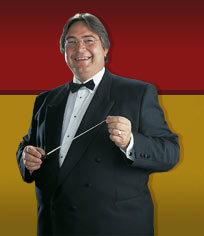There is no doubt in my mind that there are far more good players around today than there were twenty five years ago. This is probably due to the fact that there are far more professional brass teachers around; therefore young players learning brass instruments get the basics correct from the start.
Of all the fundamental elements involved in teaching brass, setting a good embouchure is one of the most crucial. My observations of radical embouchure modification after an embouchure is formed and settled is that the process is frustrating to the student, and benefits are seldom made from such alterations. It is imperative to begin to form a good embouchure from the first lesson.
The cruel fact of playing on a bad embouchure is that with perseverance a player can reach quite a good standard. Never the less trying to reach a professional standard is almost impossible. Symptoms of poor embouchure set-ups are; lack of stamina, poor flexibility, reduced and inconsistent range, inconsistent pitching, inconsistent production and poor sound. Of course there are always exceptions to the rule and there are some good players around with dodgy embouchures who possess several of the disciplines listed above to a high standard.
The question in this weekís master class is; How do you form a good embouchure and how does one maintain it?
The basic embouchure for all brass instruments is essentially the same. Perhaps the easiest way to describe an embouchure is a mouth with firm corners. Beware of stretching the lips, smiling too much will cause a thin sound, puckering-up and pushing the corners of the mouth forward will limit flexibility. A cross between a smile and a whistle with opposing muscles in a state of equilibrium will result in comfortable firmness of the corners of the mouth and will help to establish a proper embouchure.
Jaw position can be visually checked by holding a pencil perfectly horizontal between the lips. This exercise forces teeth alignment and also encourages firm corners of the mouth.
Placement of the mouthpiece to form a good embouchure is of great importance and is the easiest thing to check. An orthodox embouchure will have the mouthpiece in the centre of the lips with approximately fifty to sixty percent of the mouthpiece on the top lip. Variables which may affect this position are; basic lip shape, teeth formation, and length of the upper lip. Any such variation should not be extreme and probably not more than two millimeters off centre, although the bigger instruments will tolerate more. Rarely are good results achieved by positioning the majority of the mouthpiece on the bottom lip. This may well be because the top lip is the one that takes most of the pressure and usually remains a constant shape regardless of range or dynamic, the top lip only changes tension minimally. The lower lip is constantly changing shape, tension and thickness. When approaching the low register the lower lip becomes larger, more relaxed and looser and when approaching the high register thinner and more tense.
Flexible movement of the lower jaw from one register to another is made easier by keeping the upper rim of the mouthpiece fixed on the upper lip. The lower jaw rises and falls to adapt to the varying thickness of the bottom lip and thus changes the size of the mouth cavity too.
When working on embouchure development consider the corners of the mouth and their tension. Make sure there isnít too much movement of the top lip. Avoid stretching the corners when ascending into the upper register and avoid puffing the cheeks out when descending into the low register.
Use a mirror when practising and check that the chin remains flat, pointed down and brought slightly forward. When the low register is approached gradually drop the lower jaw. The inside of the mouth cavity will increase allowing the chamber to accommodate the resonance of the lower tones. When approaching the upper register slightly raise the lower jaw but make sure not to bunch the chin.
Embouchure strength should be secure in the middle register before exploration of the extremes. Forcing a student to play too high too soon can result in mouthpiece movement on the top lip and lead to a player developing two mouthpiece positions, one for high notes and one for low notes. Movement of this nature should be discouraged at all costs.
Slurring notes with the same valve combination are invaluable exercises for maintaining and developing a good embouchure. Dr Charles Colinís Lip Flexibilities is a must have for the serious brass student and teacher.
Itís worth spending a little extra time setting up and maintaining good chops. A good embouchure will save valuable teaching time and hours of frustration during personal practice.
Remember, good habits never have to be broken, but bad habits are extremely difficult to break.
© Robert Childs |
